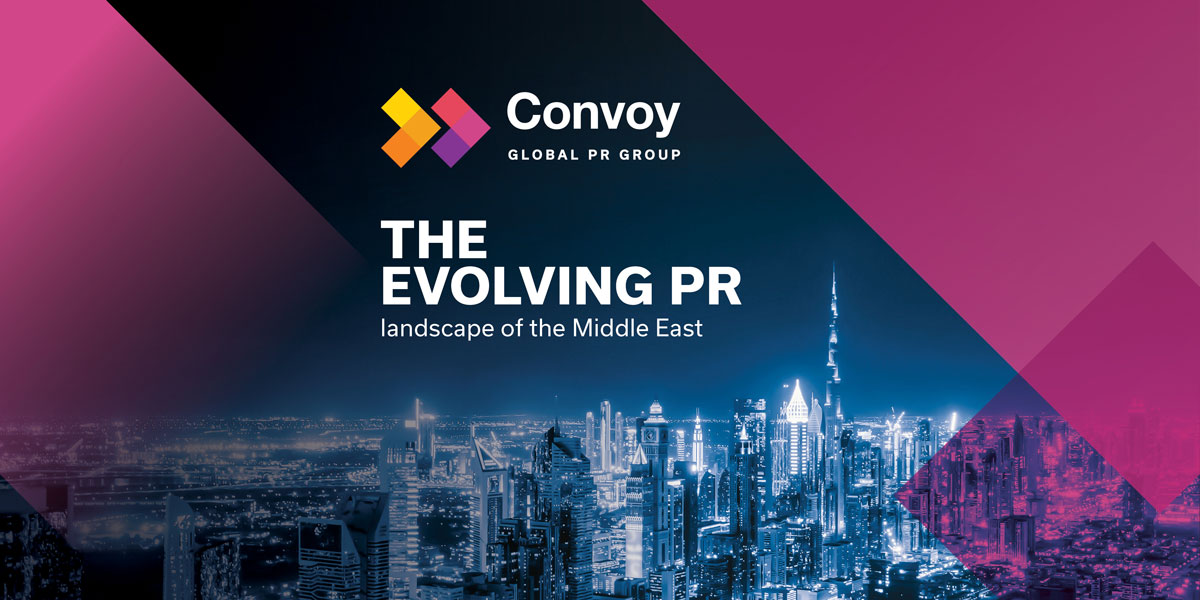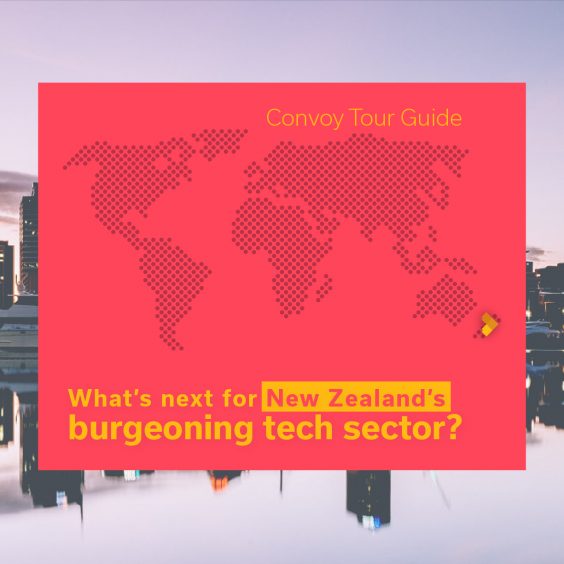Regional growth and changing media trends
In the first Convoy session of 2025, Abdulrahman Inayat, co-founder of W7Worldwide, our newest Convoy partner based in Saudi Arabia, discussed the economic, cultural and media landscape of the Middle East. He provided valuable insights for effectively managing public relations and social media campaigns in the region.
Economic expansion and cultural change
The region’s rapid growth, cultural shifts (including rising MENA cinema revenues), and upcoming mega-events like the 2027 Asian Cup, 2030 Expo, and 2034 World Cup highlight its growing global importance. Meanwhile, countries such as Saudi Arabia and Bahrain are easing regulations to attract foreign investment, making business expansion easier. This has led more companies to relocate their headquarters to Saudi Arabia, further reinforcing economic growth and global influence.
The rise of digital in the region
Digital media is rapidly growing in the Middle East, particularly in Saudi Arabia and the GCC countries. While television remains the dominant traditional medium in Saudi Arabia, the gap between offline and online newspaper readership is narrowing. This shift reflects broader changes in media consumption, as much of the region’s population is young and digitally engaged. Consumers are increasingly driven by convenience and experience, leading to a transition from traditional to digital media.
The rise of social media and digital platforms in the MENA region, combined with high levels of mobile usage and digital content consumption, has significantly transformed communication and PR strategies. On average, users in this region engage with more social media platforms than the global average, and mobile-first behaviour is more prevalent than in the US and UK. In 2024, social media was the dominant news source in the UAE and Egypt, while in Saudi Arabia, it was second only to television.
Saudi Arabia exemplifies this digital transformation, with 99% of its 37.2 million residents being internet users and 94.3% actively using social media. The country has 35.1 million TikTok users, 28.3 million YouTube users, 22.6 million Snapchat users, 16.3 million Instagram users, 16.9 million X users, 14.6 million Facebook users, and 8.9 million LinkedIn users. Consumers under the age of 44 account for 70% of the digital market, reinforcing the importance of digital platforms for audience engagement.
Certain social media platforms have gained particularly strong traction in the region. TikTok’s reach is exceptionally high, with penetration rates of over 100%. Instagram has the highest reach in Bahrain at 95.6%, followed by the UAE at 90.7% and Kuwait at 84.5%. These trends have led to a fundamental shift in PR campaigns, with an increasing focus on digital and social media channels.
As digital increasingly dominates, it has become an essential component of any PR strategy. To make a meaningful impact, PR agencies are adopting a storytelling approach, leveraging digital and social media to deliver targeted messages. Creating engaging content and compelling narratives is crucial, while responding swiftly to digital trends is vital for campaign success. Using analytics for deeper insights enhances the effectiveness of PR strategies, ensuring brands can adapt to the rapidly evolving digital landscape. With the continuous innovation of social media platforms and the increasing adoption of digital tools, social media usage in the Middle East is expected to grow even further in the coming years.
Navigating culture and trends
Understanding cultural differences when approaching the media in the Middle East and North Africa is essential for effective PR. Cultural nuances vary even within the same country, influencing media strategies. Localisation plays a crucial role in PR success. Content must be tailored not only to specific markets but also to the cultural context. Localisation also includes prioritising the creation of Arabic content to reach a wider audience. Using appropriate language and tone is essential to avoid misunderstandings, while respectful communication builds trust and strengthens relationships. Ultimately, culturally sensitive PR leads to better results.
Beyond cultural considerations, the foundation of effective PR in the region lies in deep insights into market trends, media, and influencers. Continuous monitoring of public sentiment and making informed, data-driven decisions are crucial. PR professionals must remain agile, adapting to rapidly changing market dynamics. Embracing digital tools, leveraging data-driven social media analytics, and incorporating AI-powered solutions can enhance PR efficiency. Real-time feedback is necessary for refining strategies and ensuring ongoing improvements.
In addition to traditional PR methods, strategies like news hijacking and profiling key individuals can enhance campaign outcomes and influence. Influencer marketing remains a powerful tool for audience engagement, but successful partnerships depend on alignment between influencer values and brand identity. Authenticity and quality engagement are key factors in effective influencer collaborations. At the same time, regulatory measures are being implemented to uphold higher standards within the influencer industry.
While paid content can be influential, it should not dominate PR strategies. Striking a balance between paid and organic efforts is essential. Identifying and leveraging valuable content ensures sustained engagement and long-term success in the region’s dynamic media landscape.
Authentic, purpose-driven and sustainable brand-building
Modern PR leverages the growing emphasis on creating a sustainable future by aligning with consumer values, which enhances brand reputation. Organisations are increasingly prioritising purpose and social responsibility, and the role of communicators is shifting towards addressing social issues. There is a growing need for authenticity, as purpose-driven communications engage audiences through compelling narratives.
At the same time, PR plays a vital role in attracting sustainable investors by cultivating positive brand perceptions. Emphasising sustainability and environmental, social, and governance (ESG) factors helps engage stakeholders effectively. As a result, building strong, sustainable brands is becoming more important in today’s business landscape.
Successfully navigating PR in the Middle East
PR in the Middle East is influenced by a unique combination of digital sophistication, cultural diversity, and changing consumer expectations. The region is particularly digitally savvy, making digital expertise essential for effective communication. However, overlooking cultural nuances can be detrimental, as successful PR depends on a deep understanding of local traditions, values, and sensitivities.
Research and insights are fundamental to PR strategies in the Middle East, allowing professionals to develop targeted and impactful campaigns. Influencer marketing offers brands a powerful means to engage with audiences. Additionally, corporate social responsibility (CSR) and purpose-driven communication are crucial, as consumers increasingly expect brands to align with social and environmental values.
To thrive in this dynamic landscape, PR professionals must embrace localisation and capitalise on digital and social media trends. By combining cultural sensitivity, digital expertise, and adaptability, PR practitioners can forge meaningful connections and execute impactful campaigns throughout the Middle East.




